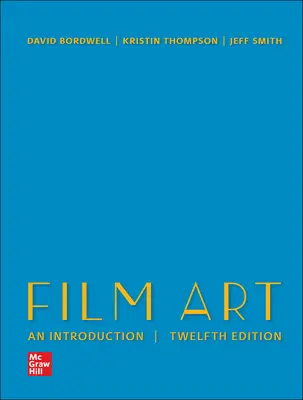
Books give an overview of a subject and provide information on core concepts and theories. This makes them a good starting point for your assignments. Core books for your subject will be listed on your module reading list. If you have an online reading list on Blackboard or another learning environment, this will show you the copies of the book available from the library. You can also find books by searching FINDit, the Library search engine.
Here are some shelfmarks to get you started.
| Books | ||
| 777 | Cinematography | |
| 777.55 | Film & video editing | |
| 791.43 | Film | |
| 791.4301 | Film theory / film philosophy | |
| 791.43025 | Art direction | |
| 791.4309 | Film history / silent film | |
| 791.43092 | Directors by country | |
| 791.4372 | Screenplays / film scripts | |
| 791.436 | Film genres / documentary films | |
| 808.23 | Script writing / screen writing | |
Films & TV Programmes
| 791.4309 | Film history / Silent films |
| 791.436 | Documentary films |
| 791.4372 | Individual films |
| 791.4375 | Film collections |
| 791.4334 | Animated films |
| 791.4572 | Television programmes |
| 791.4375 | Television Series / Boxsets |
Use FINDit: Search/Libraries, to perform detailed searches for individual books or for material relevant to your topic or subject.
1. To find a specific book title, enter the book title or author in the FINDit search box and select the Libraries search option.
2. To find books on a subject, enter a keyword into the FINDit search box and select the Libraries search option.
3. Can’t find the book you are looking for? You can request it as an interlibrary loan or Recommend the book to your Librarian

Let's work together to make our collection blossom
To recommend a book email your librarian.
We will need:
Book title and Author
Date
ISBN
Please include your student number and reason for the recommendation.
Cinema Studies: The Key Concepts is essential reading for anyone interested in film. Providing accessible coverage of a comprehensive range of genres, movements, theories and production terms, this is a must-have guide to a fascinating area of study and arguably the greatest art form of modern times. Now fully revised and updated for its fifth edition, the book includes entries on topics such as: Acting Audience CGI Convergence Cult cinema Digitisation and globalization Distribution Experimental film Transnational cinema World cinemas
The collaboration of director and actor is the cornerstone of narrative filmmaking. This book provides the director with a concrete step-by-step guide to preparation that connects the fundamentals of film-script analysis with the actor's process of preparation. It is ideal for students of directing, early career, and self-taught directors, as well as cinematographers, producers, or screenwriters looking to turn their hand to directing for the first time.
The world of cinematography has changed more in the last few years than it has since it has in 1929, when sound recording was introduced. New technology, new tools and new methods have revolutionized the art and craft of telling stories visually. While some aspects of visual language, lighting and color are eternal, shooting methods, workflow and cameras have changed radically. Even experienced film artists have a need to update and review new methods and equipment. These change affect not only the director of photography but also the director, the camera assistants, gaffers, and digital imaging technicians. Cinematography: Theory and Practice covers both the artistry and craftsmanship of cinematography and visual storytelling.

Film is an art form with a language and an aesthetic all its own. Since 1979, David Bordwell, Kristin Thompson and now, Co-Author, Jeff Smith's Film Art has been the best-selling and most widely respected introduction to the analysis of cinema. T
Gender in Film and Videotracks changes in gender on screen by documenting trends of the internet age. This volume focuses on the breakdown of the categories (content, production, reception) that top-down production/distribution in TV and cinema tended to keep distinct. This text is for students in sociology, media studies, and women's and gender studies.
An invaluable collection of essays and interviews exploring the business of interactive storytelling, this highly accessible guide offers invaluable insight into an ever-evolving field that is utilizing new spatial and interactive narrative forms to tell stories. This is an ideal resource for students of filmmaking, screenwriting, media studies, RTVF, game design, VR and AR design, theater, and journalism who are interested in navigating a career pathway in the exciting field of interactive storytelling.
The third edition of Bill Nichols's best-selling text provides an up-to-date introduction to the most important issues in documentary history and criticism. Designed for students in any field that makes use of visual evidence and persuasive strategies, Introduction to Documentary identifies the genre's distinguishing qualities and teaches the viewer how to read documentary film.
Undergraduate Research in Film: A Guide for Students supplies tools for building research skills, with examples of undergraduate research activities and case studies on projects in the various areas in the study of film, film theory, film production, history of film, and interdisciplinary projects. Professors and students can use it as a text and/or a reference book. Essentially, what makes this volume unique is that it brings together examples of film projects and film studies courses within the framework of research skills.
The Library has access to a wide variety of eBooks across all subject areas, these are discoverable and accessible via FINDit. Type your keywords or title into the search box and choose to search 'Libraries'.

Next refine your search to 'Full Text Online' on the left hand side of the search results.

When you have found a book that you would like to read then click on the title and access via the 'View it' link.

More information can be found in our eBooks Guide.